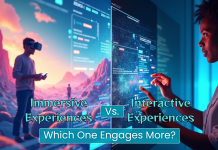Most companies are already talking about climate, ESG, and sustainability, all of which are crucial aspects of human environment interaction. They publish reports, run annual trainings, and set targets. But inside the office, people still fly when they meet online, ignore energy use, and treat waste as “someone else’s problem.”
The missing piece is not more facts. It is a deeper, lived sense of human environment interaction and how daily choices shape real places and people.
This is where immersive VR and AR can help. Instead of another slideshow, you can drop employees into a realistic scenario where their decisions change the landscape, affect communities, and alter long-term risk.
Key Takeaways
- Many companies discuss climate, ESG, and sustainability, but often disregard true human environment interaction in daily operations.
- Immersive VR and AR can enhance understanding by simulating real scenarios where decisions directly impact the environment and communities.
- Human environment interaction is crucial for businesses to recognize their operational impacts and adapt practices for sustainability.
- Effective training should incorporate immersive experiences to foster genuine empathy and real behavior change regarding environmental choices.
- To improve meaningful interaction, organizations should map critical areas, choose suitable formats, and design impactful scenarios.
Table of Contents
- What is Human Environment Interaction in a Corporate Context?
- Why Human Environment Interaction Matters for ESG and Training
- Human Environment Interaction Examples Inside Organizations
- How Immersive Technology Can Change Human Environment Interaction
- Designing VR for Real Environmental Empathy
- Common Mistakes and Simple Fixes
- Measuring the Impact of VR on Human Environment Interaction
- FAQs
What is Human Environment Interaction in a Corporate Context?
At its simplest, human environment interaction is the constant loop between what people do to the environment and how environmental systems respond.
The classic definition of human environment interaction talks about how people depend on nature, adapt to it, and modify it. For business, it is defined as
“The way your organization uses and changes natural and built environments, and how those environments in turn affect your operations, costs, risks, and communities.”
It shows up in:
- Energy, water, and material use
- Emissions, waste, and land use
- Climate and regulatory pressure are coming back at you
If your training and decision-making ignore this loop, people treat environmental topics as compliance trivia instead of part of their daily role.
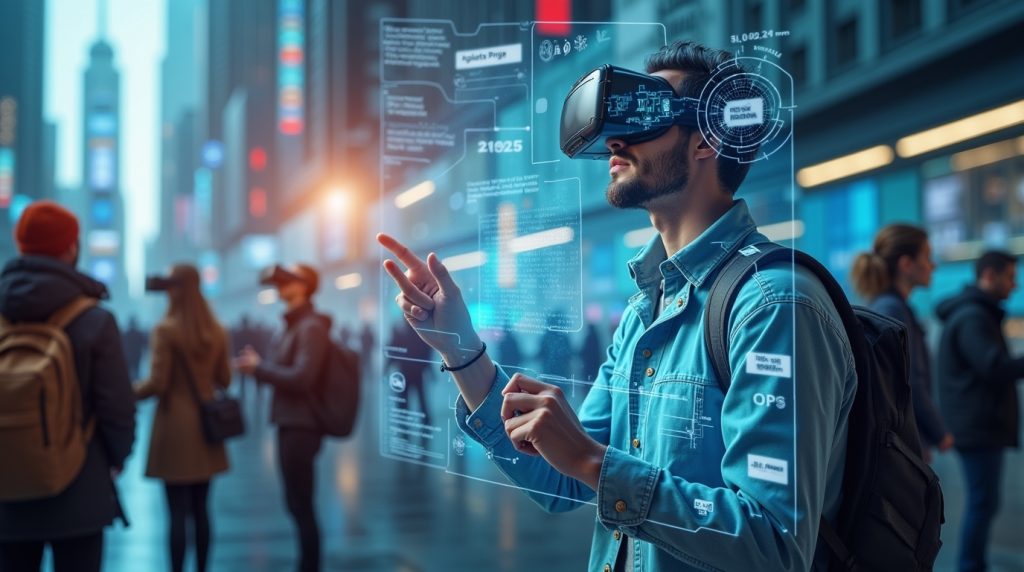
Why Human Environment Interaction Matters for ESG and Training
When employees understand real interaction, ESG stops being a slide at the end of a presentation and becomes a design constraint in their work.
A few direct links:
- Human impact on the environment shows up in everything from electricity use in offices to sourcing in supply chains.
- Climate, water, and pollution risks push back through physical damage, regulation, and brand pressure.
- Pressure from investors and customers forces eco-friendly innovation, not just minor process tweaks.
Traditional training often tells people what the company believes about sustainability.
Immersive tools can close that gap, but only if you build them around real environmental and business decisions.
Human Environment Interaction Examples Inside Organizations
Here are a few examples that show up in most medium to large companies.
Operations and Facilities
Every operations manager deals with human interaction in the environment, even if they never use that phrase.
- Running old, inefficient equipment vs investing in upgrades
- Ventilation and air quality decisions in plants and offices
- Water intake and discharge in facilities
In all of these, humans change the environment, and the environment responds with wear, health outcomes, and regulatory impact.
Product Design and Packaging
Designers and product teams shape the long tail of human environment interaction:
- Choosing between plastic, paper, or compostable packaging
- Designing products that can be repaired instead of thrown away
- Planning reverse logistics for reuse or recycling
Here, the environment is not a neutral backdrop. Material choices today decide the footprint of your brand for years.
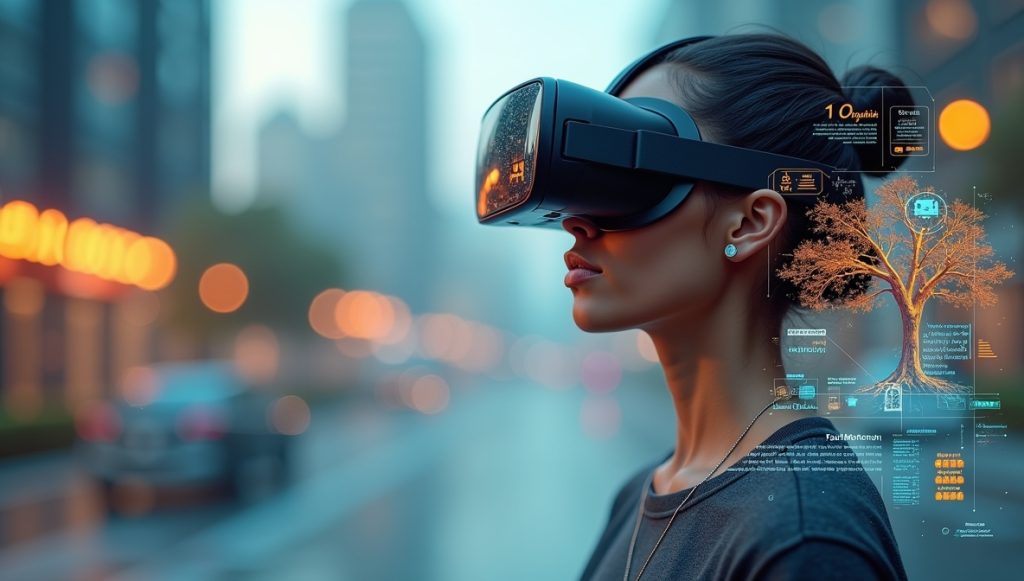
Everyday behavior and Culture
At the micro level, human environment interaction shows up in:
- Team norms around business travel
- Office energy habits and shared spaces
- Waste sorting and digital workflows
These are the moments where immersive learning can make people “feel” the stakes instead of just seeing a chart.
Human Environment Interaction Examples and VR/AR Ideas
| Area | Example of human environment interaction | Risk or opportunity | Immersive VR / AR use case |
|---|---|---|---|
| Operations | Energy-intensive plants or offices increase emissions and local impact | Higher cost, climate, and compliance risk | VR simulation where teams adjust equipment, schedules, and setpoints to hit energy and emission targets |
| Product and packaging | Material and packaging choices are driving long-term waste and pollution | Brand risk, regulation, cost of change | VR design lab that shows the lifecycle impact of different materials and formats across cities and ecosystems |
| Supply chain and logistics | Route and mode choices shaping fuel use and air quality | Emissions, congestion, community impact | Scenario where managers redesign routes and modes, then compare cost, service level, and footprint |
| Office behavior | Printing, commuting, travel, and space use are affecting the footprint | Scope 2 and 3 emissions, culture misfit with ESG goals | Short VR “day in the life” plus AR prompts in the office that highlight low-impact choices in real time |
How Immersive Technology Can Change Human Environment Interaction
Immersive Environmental Simulations in VR
Well-designed immersive environmental simulations use headsets and interactive scenes to let people explore a complex situation.
For example:
- Standing in a coastal town and watching the flood risk rise as global emissions increase
- Managing a virtual factory where every choice affects air quality, energy bills, and safety
- Walking through a virtual forest and seeing the effect of different logging policies
These immersive VR experiences put people in a virtual reality environment where they must make decisions and watch consequences unfold.
Used this way, VR becomes more than a gadget. It becomes VR for Social Change inside your company, because it turns distant topics into lived scenarios.
You can also frame modules explicitly as virtual reality and sustainability journeys, where users explore trade-offs between profit, risk, and environmental impact.
Augmented Reality (AR) Applications on the Shop Floor
VR is not the only path. Augmented Reality (AR) Applications can support interactive environmental learning in real spaces without taking people away from their work.
Examples:
- Pointing a tablet at a machine to see real-time energy or emissions data
- Scanning a product to visualize its lifecycle footprint
- Overlaying safe and unsafe zones for waste or chemical handling
From Content to Learning: Making it Stick
Whether you use VR or AR, the goal is not just information. You want:
- Stronger emotional engagement with nature and affected communities
- Clearer mental models of cause and effect
- Practice in making better choices under realistic constraints
That is where environmental education through VR and experiential learning in VR becomes powerful. People remember situations they stepped into and choices they made, not bullet points they clicked past.
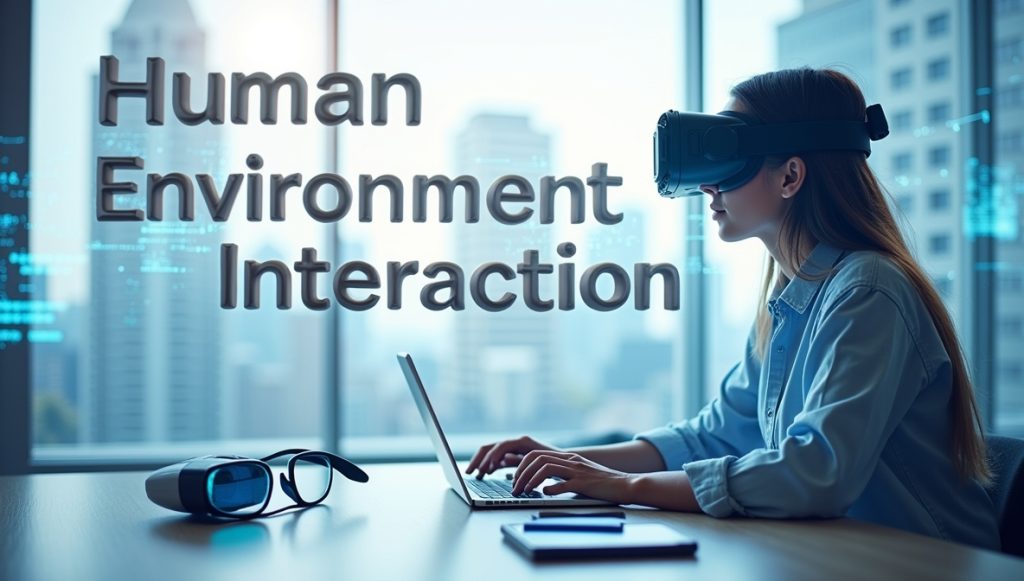
Designing VR for Real Environmental Empathy
Immersion alone does not guarantee empathy. You can have expensive headsets and still no behavior change.
Make the Scenario Specific to Your Value Chain
Generic climate content is easy to forget. Tie the storyline to your actual footprint:
- Your facilities and logistics
- Your materials and suppliers
- Your product end of life reality
The closer the scenario is to daily work, the more it reshapes human and environmental interaction in real decisions.
Show both Damage and Agency
If people only see harm, they often shut down or feel guilty without changing anything.
Build arcs where:
- Users first see the cost of current patterns of human impact on the environment
- Then experiment with better choices and see positive outcomes
- Finally, receive clear prompts to connect those choices to their role
This is how immersive technology supports motivation instead of fatigue.
Connect the Headset to Real Workflows
After a strong VR session, you need to follow through:
- Reflection questions tied to team meetings
- Links from the scenario to actual policies, budgets, and KPIs
- Simple mechanisms for employees to suggest eco-friendly innovation ideas triggered by the experience
Practical Implementation Steps for Teams
If you are responsible for ESG, L&D, or a VR product roadmap, here is a practical way to start.
Step 1: Map Your Critical Interaction Points
Identify where human environment interaction is most material for your business:
- High energy use sites
- High-impact materials or processes
- Sensitive communities or ecosystems near your operations
These are your priority storylines.
Step 2: Pick the Right Learning Format
Use VR when:
- The system is complex and visual
- You need people to feel the stakes of their decisions
- You want deep, focused sessions
Use AR when:
- You want interactive environmental learning embedded in daily work
- Data from machines or buildings can be visualized in context
Combine both when you can, so people move between full immersion and on-site reminders.
Step 3: Design Short, Sharp Scenarios
Aim for modules that last 10 to 25 minutes, each focused on one cluster of human environment interaction decisions, such as:
- Energy and comfort in offices
- Water stress and production planning
- Packaging and waste in one product line
Each scenario should end with one or two concrete actions users can take in their real role.
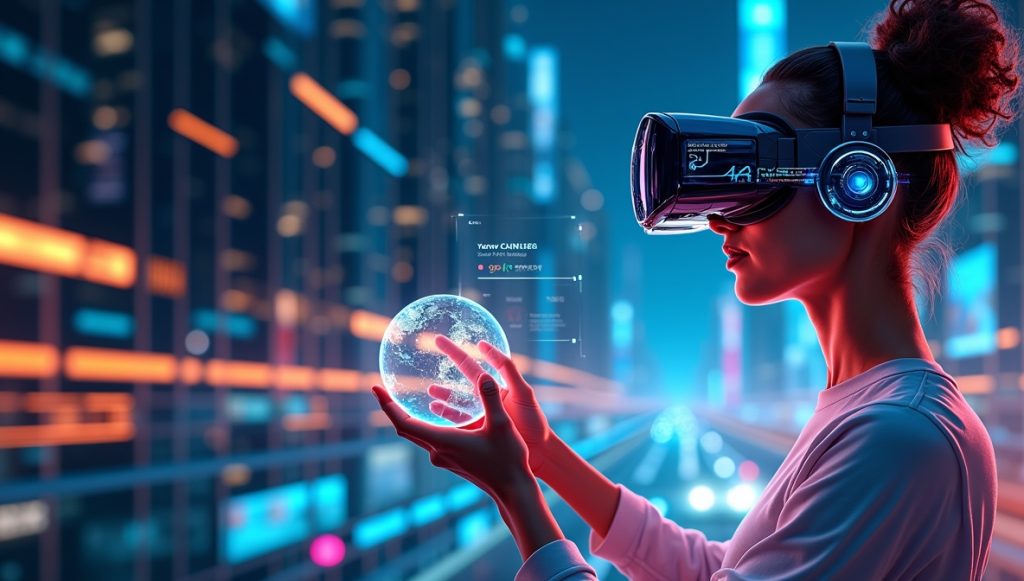
Common Mistakes and Simple Fixes
Immersive programs fail in predictable ways. Here are three patterns and how to fix them.
Tech First, Purpose Later
Problem: The company buys headsets and content libraries without a clear connection to sustainability goals.
Why it happens: Innovation or HR leads the project, but ESG and operations are not involved.
Fix:
- Start from a clear behavior change target grounded in human environment interaction
- Involve ESG, operations, and L&D when choosing scenarios
- Evaluate vendors on their understanding of your footprint, not just their graphics
Generic Global Stories
Problem: Everyone sees the same global climate narrative that does not match their work.
Why it happens: It is cheaper to produce one storyline.
Fix:
- Keep one shared frame, but branch content and decisions by role
- Show role-specific levers for human interaction in the environment
- Use separate debriefs for leaders, engineers, and support functions
No Measurement
Problem: You run sessions, collect smile sheets, and move on.
Why it happens: No one defined success metrics at the start.
Fix:
- Define a small set of behaviors and KPIs linked to each module
- Track them before and after rollout
- Treat human environment interaction in metrics the same way you track safety or quality
Measuring impact on behavior and business
To know if immersive programs are more than a trend, measure at three levels.
- Mindset and empathy
- Short surveys on the perceived relevance of environmental risks
- Qualitative feedback on emotional engagement with nature and communities
- Decision quality
- Scenario-based assessments that mirror real interactions of humans with environmental trade-offs
- Quality and feasibility of sustainability ideas after VR sessions
- Behavior and outcomes
- Changes in energy use, waste, travel, or supplier choices in target groups
- Participation in projects that involve virtual reality and sustainability or process redesign
When you track these properly, human-environment interaction moves from theory to a measurable part of business performance.
Measuring the Impact of VR on Human Environment Interaction
| Level | What you measure | Example metrics | Why it matters |
|---|---|---|---|
| Mindset and empathy | How people feel about nature, places, and communities after training | Empathy and relevance scores, comments about emotional engagement with nature | Shows whether immersive work changed how people relate to the environment and communities, not just what they know |
| Decisions in context | How people decide in realistic cases after training | Performance in scenarios, policy choices, and quality of ideas in eco-friendly innovation sprints | Tests if concepts about human environment interaction are being applied under pressure |
| Real behavior and KPIs | What actually changed in work and numbers | Site energy use, waste volumes, travel patterns, supplier mix, project participation | Proves that immersive learning shifted real interactions, not only attitudes inside a headset |
FAQs
A human environment interaction is any situation where people use, change, or respond to their surroundings. For example, running a factory, planning a transport route, or choosing packaging are all these interactions because they change land, air, water, or resource use and then create impacts that come back to affect people and businesses.
Human environment interaction means the two-way relationship between humans and the environment. Humans shape the environment through energy use, construction, farming, and industry, and the environment responds through climate risks, resource limits, health effects, and regulation.
Human environment interaction is the backbone of ESG. It covers how your company uses energy, water, land, and materials; how that creates emissions, waste, and social impact; and how climate change and regulation push back on your strategy and costs.
No. VR is most useful when you need people to experience complex cause and effect, feel the stakes, or practice decisions in a realistic virtual reality environment. For simple awareness or policy refreshers, lighter formats are fine.
VR and AR make environmental education through VR more concrete by placing employees inside realistic scenarios. They see how their decisions change energy use, waste, or community impact, which supports experiential learning in VR and better real-world decisions.
Yes. If your product makes human environment interaction visible, measurable, and actionable, you can position it as a behaviour change tool, not just a content library. That matters to ESG, L&D, and operations teams who want proof, not hype.




